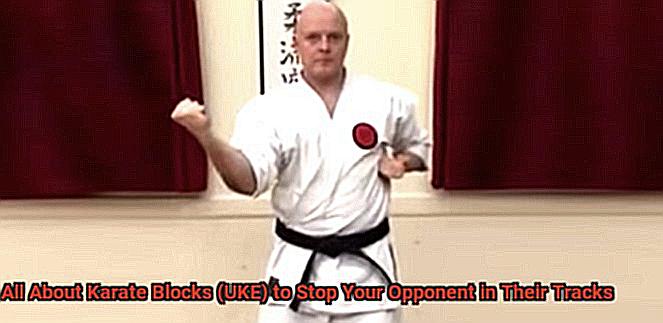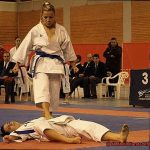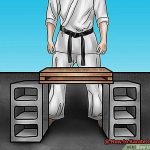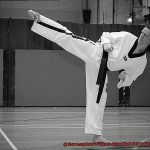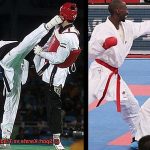Are you looking for a way to stop your opponent in their tracks?
Karate blocks, or uke, are essential tools used in karate and other martial arts. Uke are defensive tactics that can protect you from harm while also allowing offensive strikes.
In this blog post, we’ll cover everything about karate blocks (uke), including how to use them for defense and offense, different types of uke, counterattacks, and more. Uke can be divided into two main groups: hard blocks and soft blocks.
Hard blocks involve blocking an attack with either arms or legs with a lot of strength and energy. Soft blocks require one’s arms or legs to cushion the shock of a strike without causing injury.
Both forms of uke have their own advantages and disadvantages depending on the situation at hand. Counterattacks are also important when using a uke as defense against an attack.
Counterattacks involve using one’s own offensive weapons against an attacker’s attack in order to create a new line of defense. These counterattacks can be used alongside uke to develop effective defensive plans against opponents with superior striking skills than oneself.
We’ll discuss how they can be used defensively and offensively, different types of uke, counterattacks that can be used to defend against attacks, and more – so stay tuned for more details on how karate blocks (uke) can help you protect yourself from opponents.
What are Karate Blocks (UKE)?
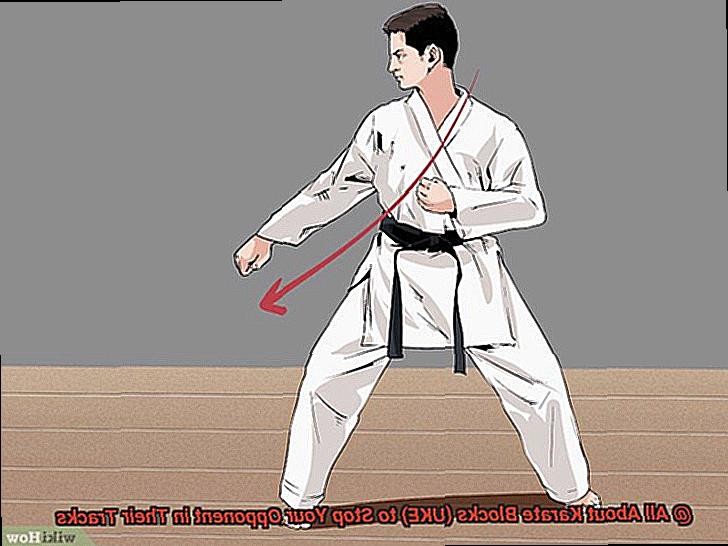
Karate blocks, or uke, are an essential defensive technique used to protect oneself from an opponent’s attack.
Practicing these blocks is a necessary part of Karate training, as it allows practitioners to develop effective reflexes and quick responses when faced with different types of threats. There are four primary types of Karate blocks: Age Uke (upper block), Gedan Barai (downward block), Soto Uke (outside block), and Uchi Uke (inside block).
Age Uke is used to deflect an incoming strike aimed towards the head or upper torso, while Gedan Barai is executed to fend off attacks aimed at the lower part of the body. Soto Uke is typically used to ward off mid-level kicks or punches aimed towards the ribs or flanks and Uchi Uke is used to deflect attacks from the inside, like a hook punch or a knee strike.
The term “uke” also refers to the act of receiving an assault and blocking it properly. This technique is incredibly important in traditional Karate because it provides the foundation for defensive tactics used in Kata (sequences of movements).
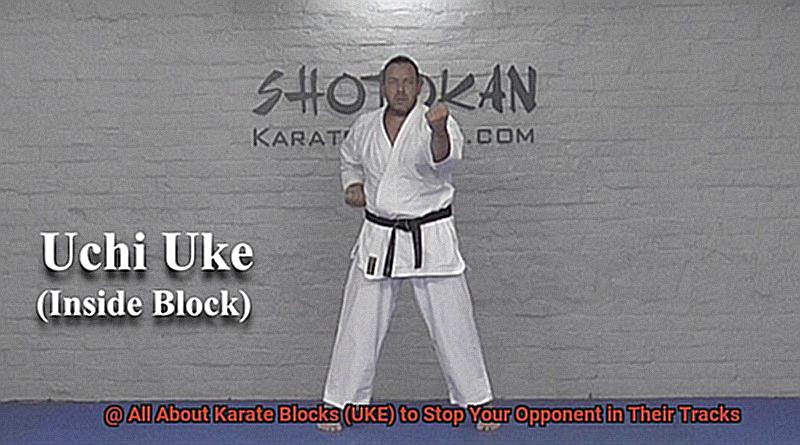
Karate blocks can be used not only on the battlefield but also in self-defense situations where a person must shield themselves from physical harm.
Types of Karate Blocks
Karate practitioners need to be able to defend themselves from incoming attacks, and the four types of karate blocks are essential for this purpose.
Age Uke, or rising block, is used to deflect high-risk attacks such as punches or kicks aimed at the head or shoulders. The practitioner lifts their hands in a circular motion from their hips to the top of their head with palms facing outward.
Gedan Barai, or downward block, is used to protect against low blows like leg sweeps or punches directed at the stomach. The arms are extended downward with palms facing the enemy and fingers pointing toward the attacker.
For blocking outside attacks, Soto Uke, or outside block, is used. The arm’s outer side is used to deflect threats and with the palm facing the opponent; it rotates inward and upward.
This block works well against straight punches and kicks as well as hooks aimed at the ribs or chest. Uchi Uke, or inside block, is used to guard against attacks coming from inside the body.
The arm’s inner side is employed to deflect an attack then pivot outward and upward with its palm facing away from your opponent. This technique can be used for body punches, hooks, or uppercuts.
Karate blocks are an important part of any karate practitioner’s training and should be practiced regularly in order to execute them correctly when needed in a real-life situation.
Purpose of Karate Blocks
Karate blocks, or Uke, are an essential part of karate and have been used for centuries as a means of self-defense.
What is the purpose of these blocks? Primarily, karate blocks are used to deflect incoming attacks and provide an opportunity to counterattack.
They can also be used to manipulate the attacker’s body, setting up throws or joint locks. In addition, blocking impacts can condition the body, strengthening bones and muscles and providing lifelong health benefits.
Karate blocks also help maintain proper distance and timing between the defender and their opponent. By blocking, they can ensure they stay out of range of the attack or close in to launch their own counterattack.
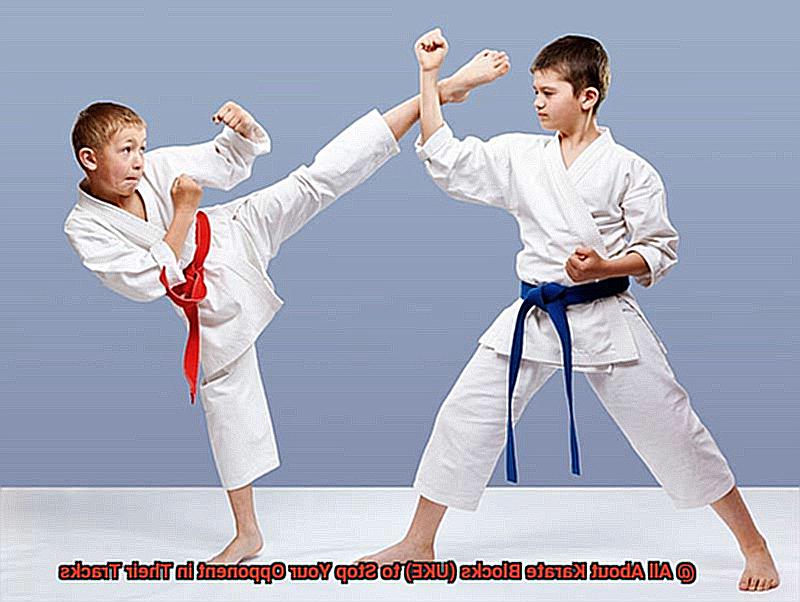
Finally, blocks can be used to disrupt an attacker’s balance, leaving them vulnerable to follow-up strikes or takedowns. In summary, karate blocks provide a foundation for defense and offense in combat situations.
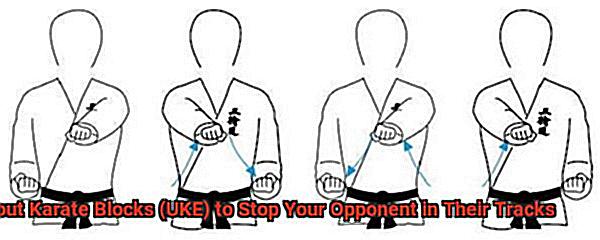
Furthermore, they can be used to disrupt an attacker’s balance, giving the defender a chance to take control of the situation.
Are Karate Blocks Effective in Combat?
The effectiveness of Karate blocks in combat is undeniable.
Developed and refined over centuries of practice and use in actual combat situations, these defensive techniques are essential to the Karate system’s philosophy and practice. Karate blocks are designed to redirect an opponent’s attack away from the defender’s body, absorbing its force and leaving them open for a counter-attack.
To achieve this, practitioners must be able to execute their blocks with the correct technique, timing, and situational awareness. This is why training is so important; it helps build the reflexes and muscle memory needed to respond quickly and effectively in real combat situations.
However, it’s worth noting that even with perfect technique and timing, the effectiveness of Karate blocks also depends on an adversary’s attack strength and direction – something that can vary greatly in real life situations.
Using Karate Blocks for Self-Defense
Self-defense is a critical skill in today’s world, and knowing how to protect yourself is essential.
Karate blocks, also known as UKE, are a powerful tool for self-defense and can be used to stop an attacker in their tracks. Karate blocks are defensive maneuvers that use four main types of blocks: High Block, Middle Block, Low Block, and Inner Block.
Timing is key when using these blocks; if the block is misjudged or too slow, it can leave one open to a counter-attack. Karate blocks can be used effectively in self-defense situations where one must protect themselves from physical injury.
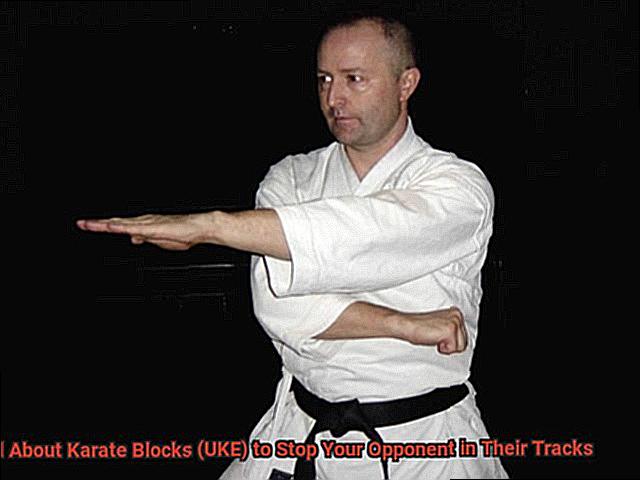
Mastering the art of blocking takes practice and dedication; however, with proper preparation, Karate blocks can be used confidently in self-defense situations.
The Uke Technique in Karate Blocking
Karate blocking is an essential element of self-defense, and the Uke technique is at its core.
The Japanese word for “receiver,” Uke provides a variety of defensive options to intercept incoming attacks from an opponent, no matter where they come from – high, middle, low, or outside. The purpose of using the uke technique in Karate blocking is twofold: to stop your enemy’s attack and create an opening for your counterattack; and to disrupt their balance and momentum.
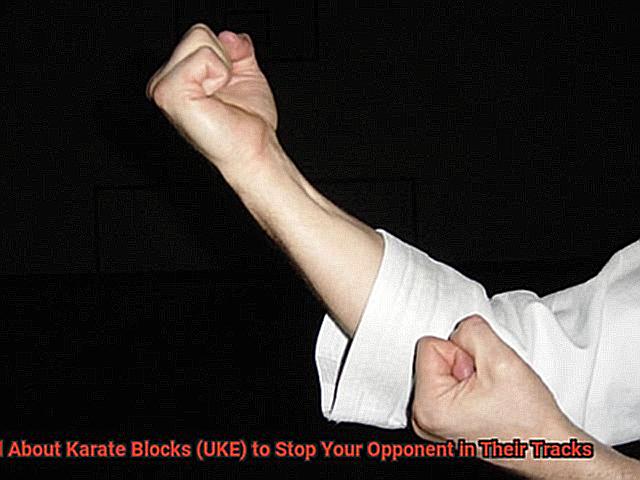
However, it’s important to remember that blocking alone won’t guarantee victory in a fight – you must also use your striking and footwork skills in tandem with the uke technique for maximum effectiveness. To become a master of the uke technique in Karate blocking, you must practice diligently and execute correctly.
Timing is critical: if you misjudge when to block, you’ll be left vulnerable to a deadly counter-attack.
Practicing the Uke Technique with a Partner
If so, then honing your Uke technique with a partner is essential.
Uke refers to the person who receives the block, while tori is the one who delivers it. Both must work together to practice and perfect their technique.
There are many advantages of practicing uke with a partner. Practitioners can gain experience in responding to a live opponent, develop their technique in a realistic setting, and identify areas that need improvement.
When practicing uke, it’s important to keep the right distance and positioning. The uke should stand at an appropriate distance from tori, with their hands in the ready position.
Tori should practice delivering the block with proper form and technique. Remember, practicing uke is not about winning or losing; it’s about improving your technique and form.
Practicing the Uke technique with a partner is an effective way to do this; it gives you the opportunity to refine your defensive skills in an authentic environment while still gaining experience dealing with live opponents.
NnexdYdmD8w” >
Conclusion
Karate blocks, or uke, are an essential tool in martial arts.
They can be used to stop an attacker’s attack and manipulate their bodies to set up throws or joint locks. Uke also strengthens bones and muscles while providing lifelong fitness benefits.
Four key types of karate blocks exist: Age Uke (upper block), Gedan Barai (downward block), Soto Uke (outside block), and Uchi Uke (inside block). Age Uke is for high-risk threats such as punches at the head or shoulders, Gedan Barai for low blows like leg sweeps or punches at the stomach, and Soto Uke for outside threats like body punches, hooks, or uppercuts.
To become a master of karate blocks in combat situations, practitioners must train diligently to develop reflexes and muscle memory. Timing is everything; if the block is misjudged or too late, it could leave one open to a counterattack.
Karate blocks are an essential part of any practitioner’s education.

